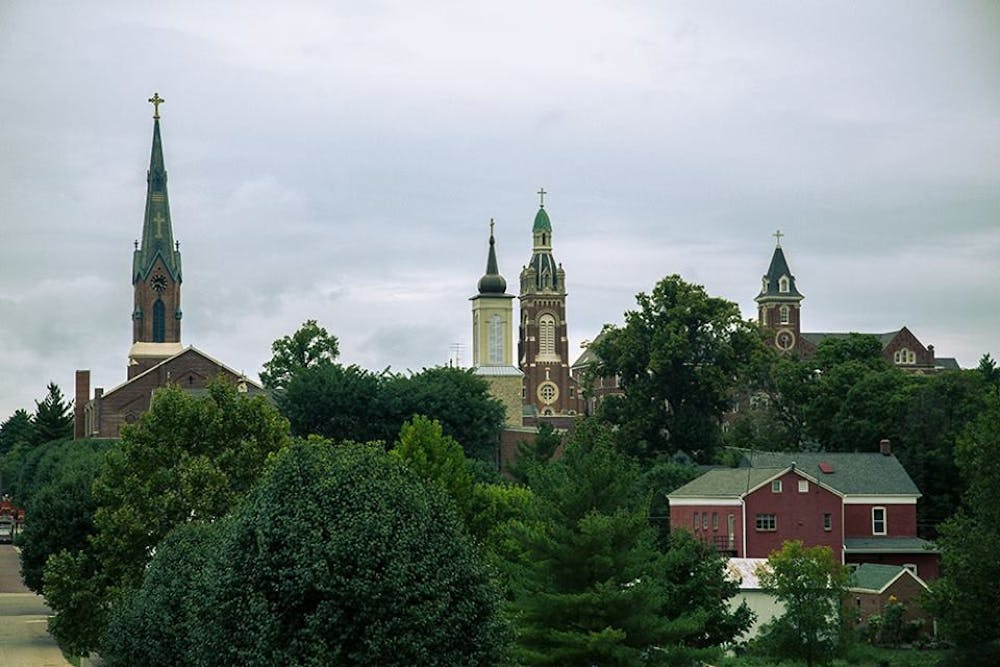In a time when many Hoosiers are denouncing their home state or threatening to move far away from it, one telecommunications professor just wants to photograph it.
In 2014, Chris Flook received funding from Ball State and state and national organizations to travel across Indiana’s 92 counties and highlight the state’s rural areas through photography.
“[The] whole idea is to promote small towns, but [I] want someone 100 years from now — [someone] who needs to research on historic preservation — to see what the town looked like in 2015,” said Flook, who was born and raised in Indiana.
The project is called "Small Town Indiana" and is part of a larger initiative to promote urban areas in Indiana around the same time as Indiana's 2016 bicentennial celebration, according to the project's website.
So far, Flook has photographed eastern Indiana from the Ohio River to the Ohio border. He’s passed through many rural enclaves of the state including Oldenburg, Ind.
Oldenburg’s skyline of towering church spires reminded Flook of a trip he took to southern Germany and the huge cathedrals he saw there. He said this showed him that Indiana is far more complex than people think it is.
Currently, Flook is preparing for his second series of photographs by making connections with university faculty. He submitted his proposal for a second grant on Friday.
Mary Heidemann, the director of Ball State’s historic preservation graduate program and the head of its grant program, teamed up with Flook. Flook said she has helped by giving him advice on the places he visits.
Heidemann said Indiana history could be taught through architecture, and Flook’s project could help with this.
“[The project is] not about big town versus little town; it’s about recognizing and preserving the architectural and social history of the state by understanding and preserving its buildings and patterns of urban design,” she said in an email.
Flook has also received help from John Straw Jr., the assistant dean for digital initiatives and special collections.
Flook hopes to continue his project by traveling south of I-70.





